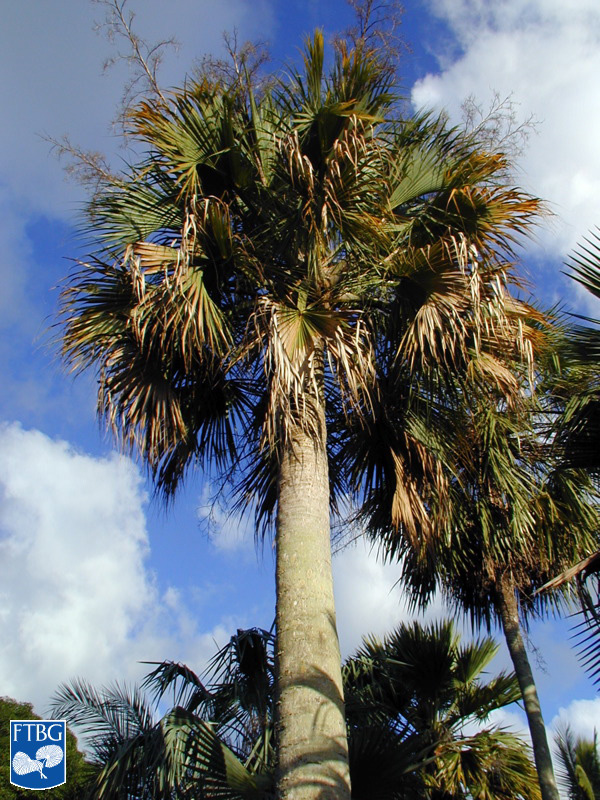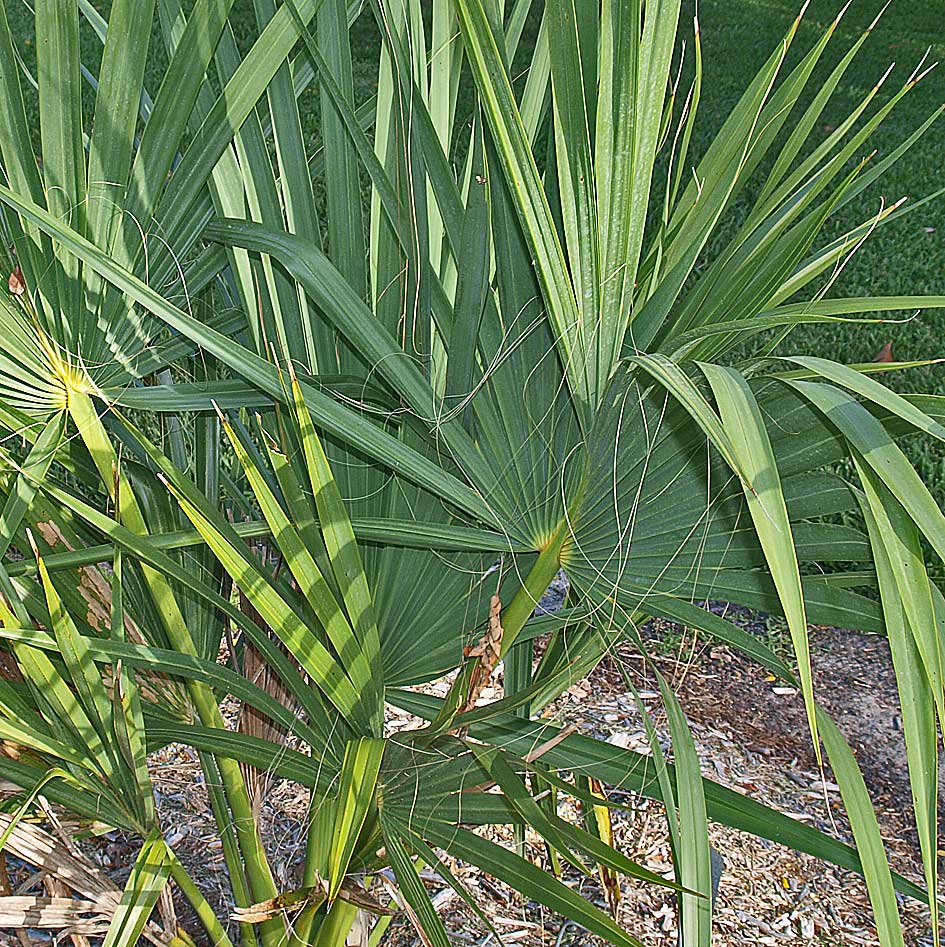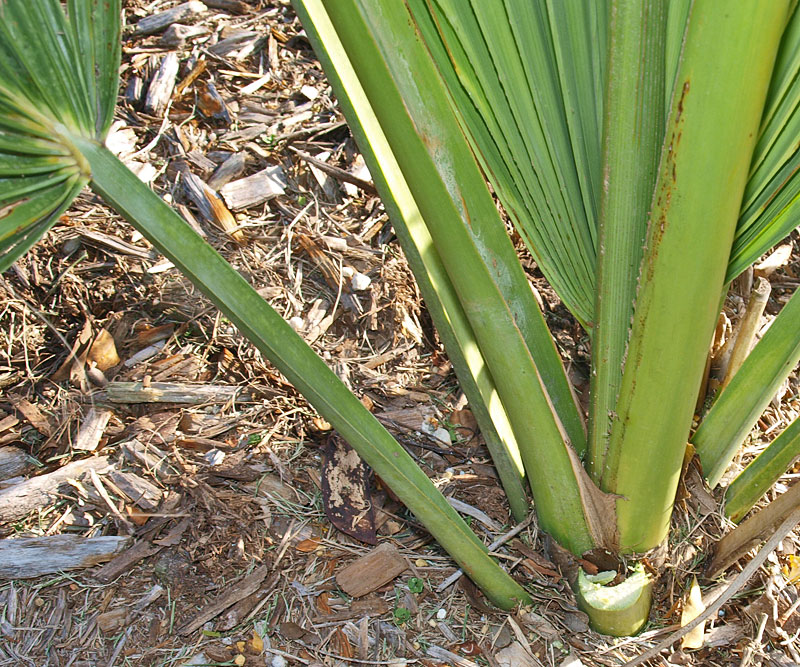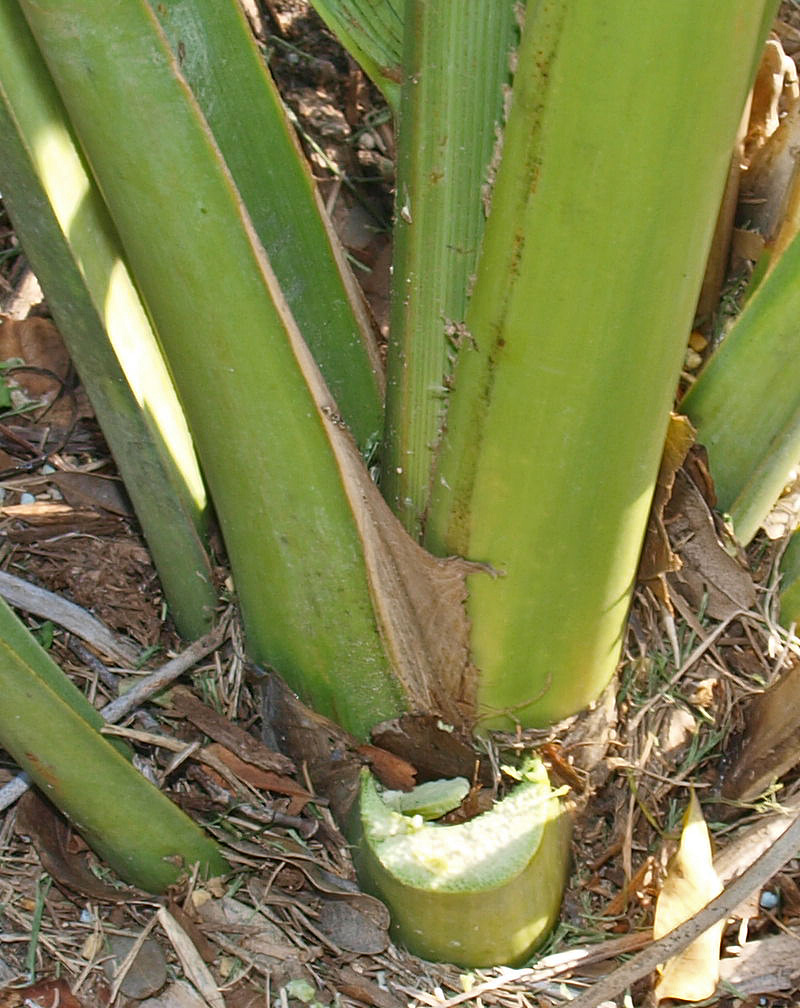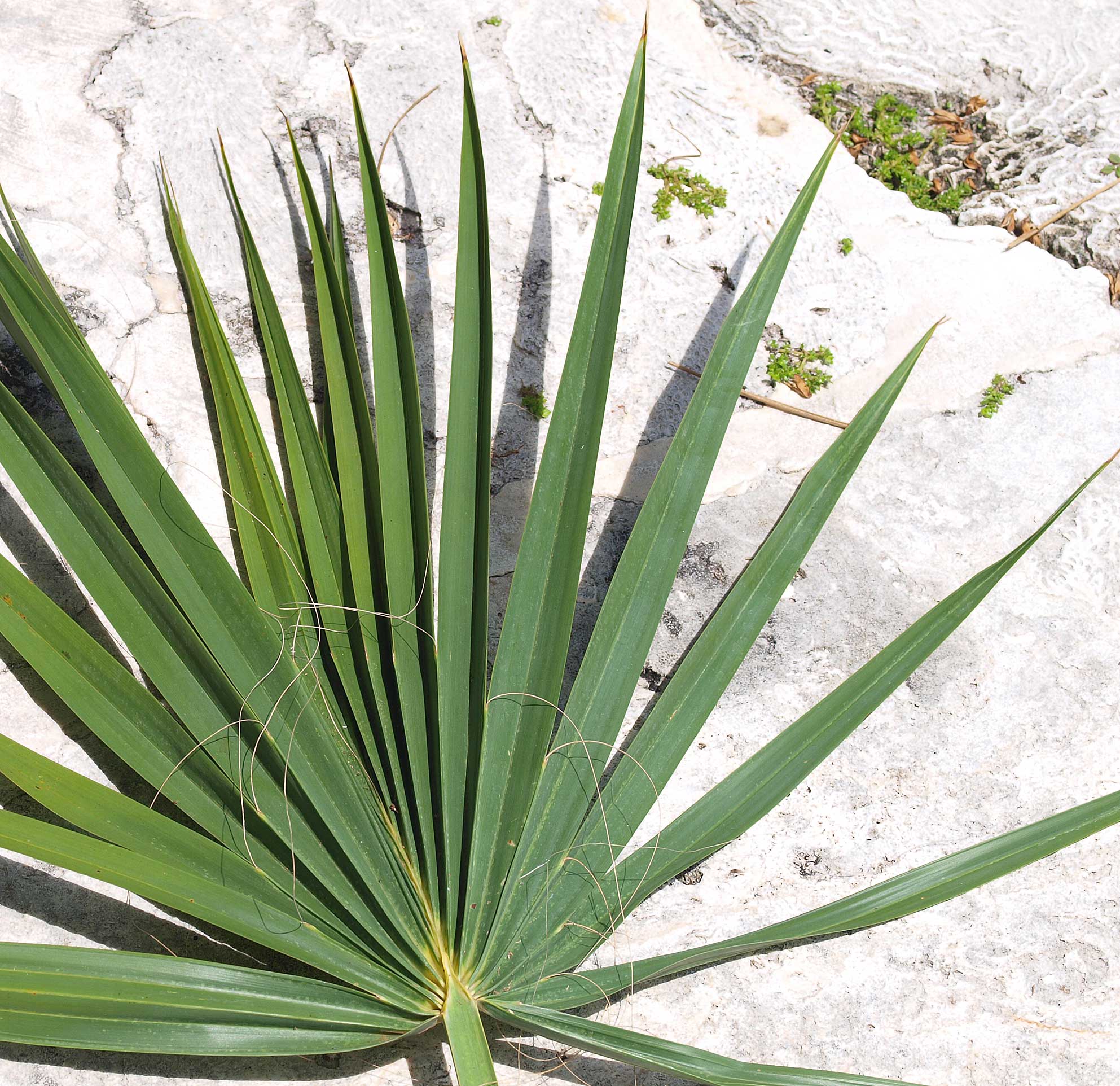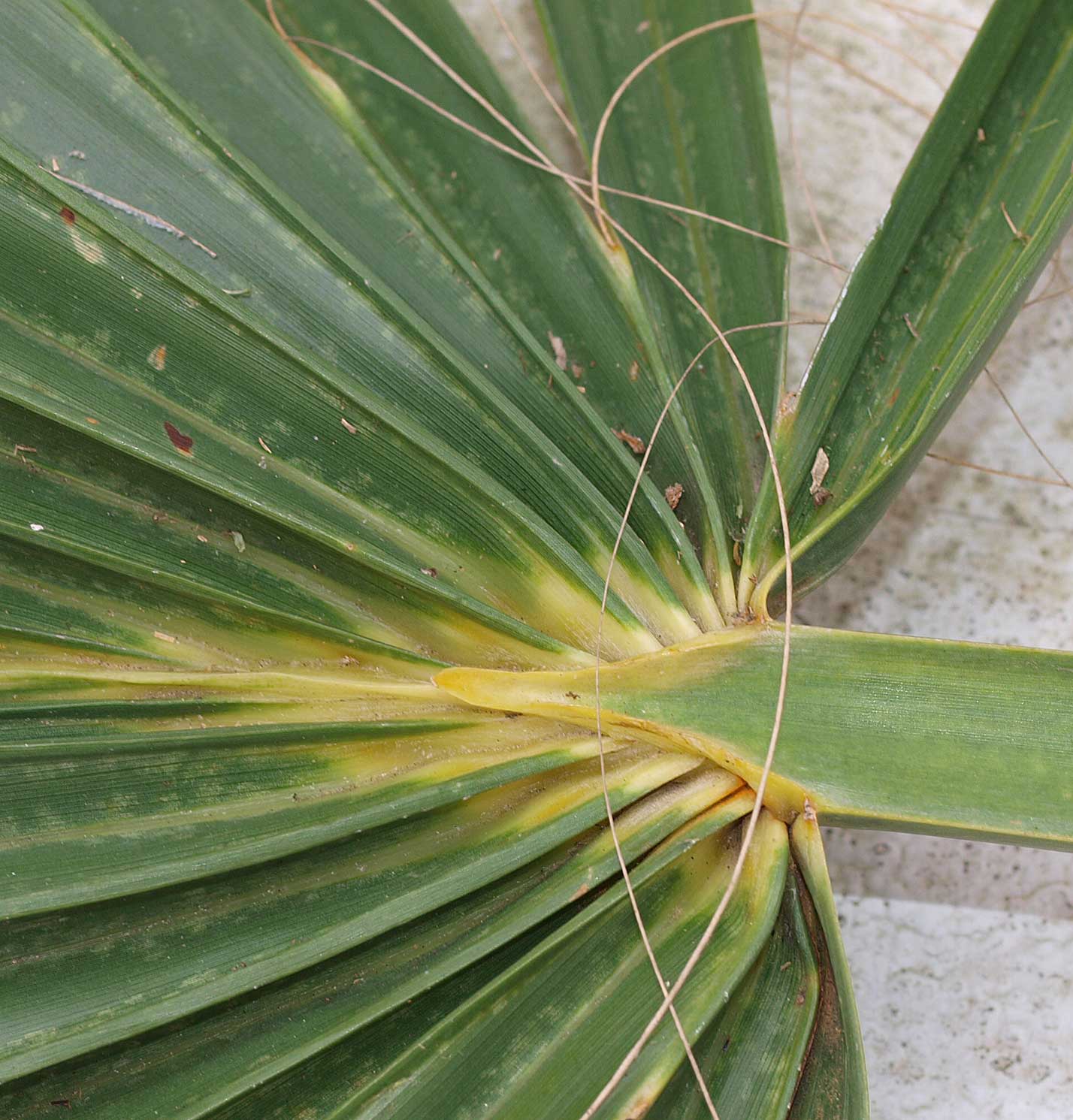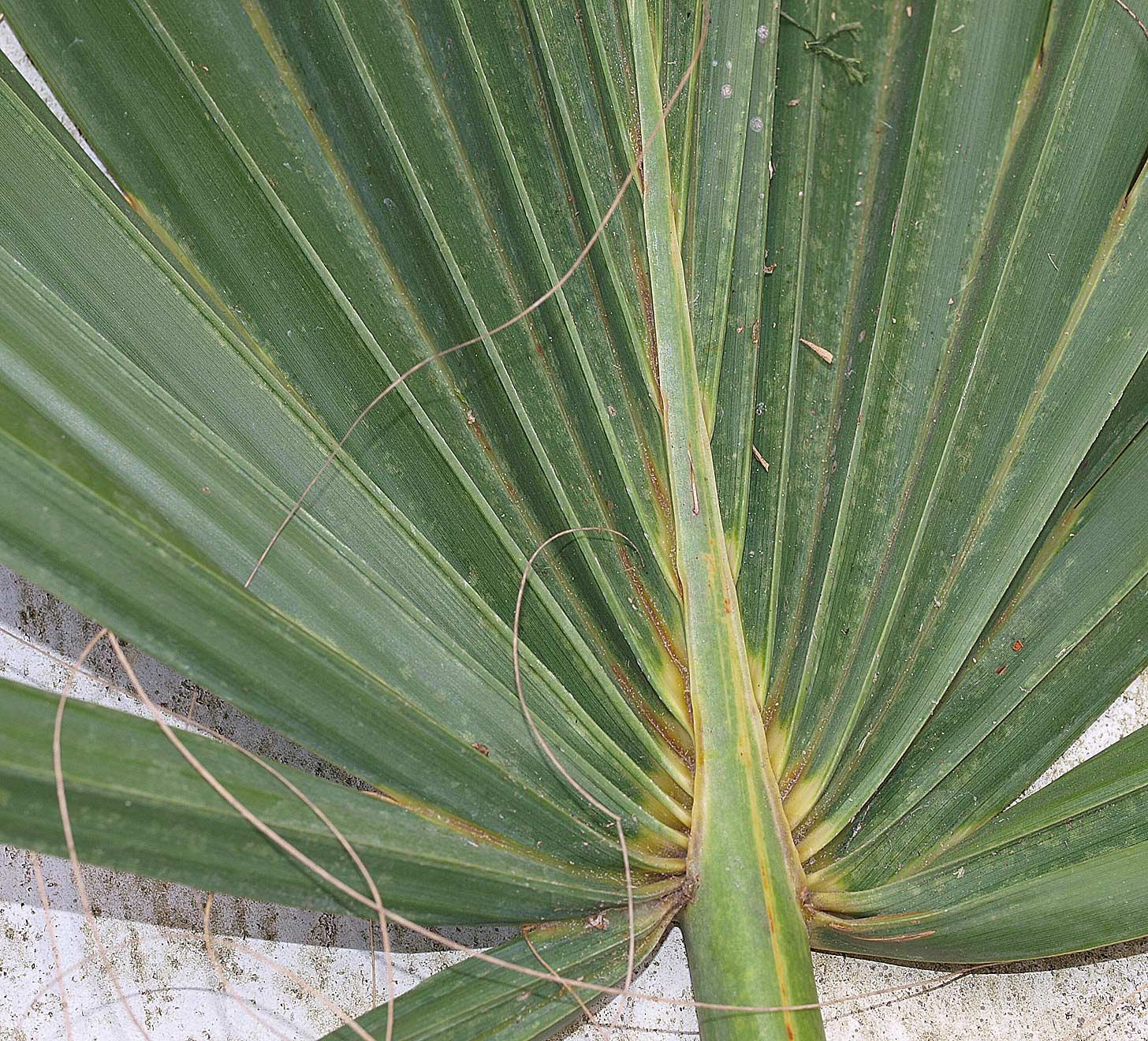Sabal causiarum
|
Sabal causiarum habit. Photograph courtesy of Fairchild Tropical Botanical Garden, Guide to Palms http://palmguide.org/index.php |
|
Sabal causiarum habit, juvenile palm |
|
Sabal causiarum leaves |
|
Sabal causiarum leaf bases with beige-brown ligule |
|
Sabal causiarum leaf bases with closer view of beige-brown ligule |
|
Sabal causiarum leaf blade with fibers |
|
Sabal causiarum leaf (adaxial) with hastula |
|
Sabal causiarum leaf (abaxial) with costa |
Common name
Puerto Rican hat palm
Description
Stems: Solitary, massive, upright stems to 15 m tall and to 70 cm diameter. Leafleaf:
in palms -- the leaf blade (which is usually divided into leaflets or leaf segments), the petiole (or leaf stalk) and the sheath (which forms the attachment of the leaf to the stem)
bases usually fall away quickly to leave a smooth gray stem with close rings. Leaves: Costapalmate, induplicateinduplicate:
Most palm leaflets or leaf segments are obviously folded. If the folds create a V-shape, with the midrib lower than the margins (so that rain might fall "into a valley"), the folding is induplicate.
, twisted into several planes with a strongly arching costacosta:
mid-rib or vein
, to 2 m wide. Leafleaf:
in palms -- the leaf blade (which is usually divided into leaflets or leaf segments), the petiole (or leaf stalk) and the sheath (which forms the attachment of the leaf to the stem)
segments rigid, with numerous fibers along the segment margins. Petiole bases split. Flowers and fruits: Inflorescences exceeding the leaves in length, arching or pendulous, and branched to three orders. Flowers creamy white, bisexual. Ripe fruit black, spherical, 7-11 mm diameter.
Diagnostic features
Solitary, massive, upright, smooth gray stems with close leafleaf:
in palms -- the leaf blade (which is usually divided into leaflets or leaf segments), the petiole (or leaf stalk) and the sheath (which forms the attachment of the leaf to the stem)
scar rings, costapalmatecostapalmate:
a fan-shaped leaf with a midrib (costa) extending into the blade, sometimes extending far enough into the blade to cause it to curve (e.g., <em>Sabal palmetto</em>)
leaves twisted into several planes, petioles with light brown ligules and inflorescences longer than the leaves
May be confused with
Other Sabal species, but it has the most massive stem of the species covered here.
Distribution
Native to Caribbean islands
Additional comments
This genus is among the most common in and around the Caribbean region and among the few native to the continental United States.
Scientific name
Sabal causiarum (O.F.Cook) Becc.
Family
Arecaceae/Palmae
Synonyms
Inodes causiarum O.F. Cook
Inodes glauca Dammer
Sabal haitensis L.H.Bailey
Sabal questeliana L.H.Bailey


